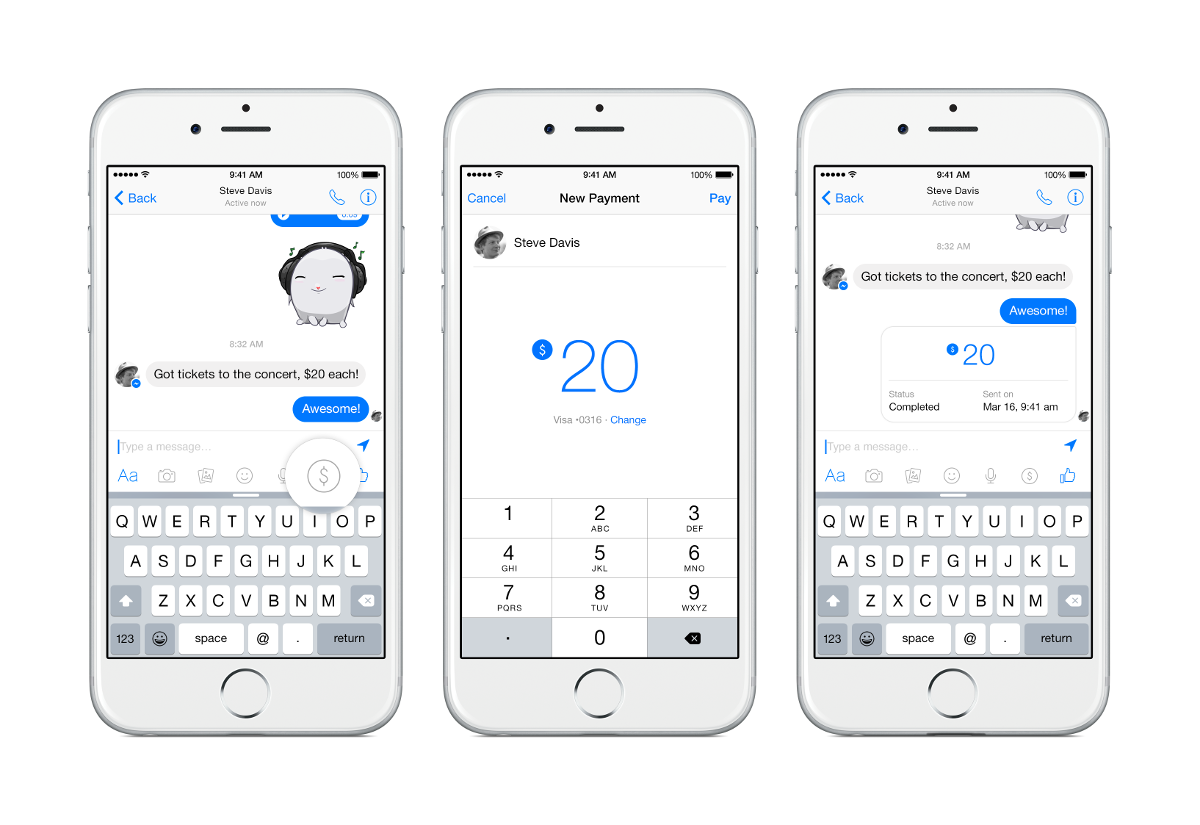aNewDomain — Apple, Google, PayPal, Visa and MasterCard have been fighting over you. Specifically, over how you will pay for stuff in the future. Each wants to be the default system you use on your mobile device. You’ll decide. And you’ll vote with your dollars.
— Apple, Google, PayPal, Visa and MasterCard have been fighting over you. Specifically, over how you will pay for stuff in the future. Each wants to be the default system you use on your mobile device. You’ll decide. And you’ll vote with your dollars.
And now Facebook Messenger is in the fray. Here’s how the battle is shaping up.

On March 17, Facebook joined the mobile payments arena by announcing that a new payment system had been added to the Facebook Messenger app.
The new feature will be rolled out over the next few months and, according to the announcement, it’ll be a free addition to Messenger.
This first iteration of the Messenger payment system will be limited to direct friend-to-friend transactions. In other words, you can send or receive money only from someone you have added to your list of Messenger friends. So, unless you’re really friendly with your landlord, you will not be able to use Messenger to pay the rent.
The other limitation is that the payment system will use debit cards as the backend financial service handling the actual exchange of money. Facebook will not be offering financial products or services themselves, but instead will just provide a simple conduit for transactions. Since most consumers have a debit card, this should not be a deterrent to adoption by you or your Facebook friends.
At least, it’ll work for you and your Facebook friends living in the United States. Unfortunately, this Messenger payment system will only be available in the U.S. and to consumers with debit cards issued by U.S. banks. That’s a restriction which could have a significant impact on the widespread adoption of this feature.

Moving Forward
Even with these limitations, adding a payment system to Messenger is a noteworthy strategic move by Facebook. Like the other companies vying to control the way consumers — especially young, mobile and discretionary spending consumers — pay for things, Facebook sees a lucrative opportunity. The Messenger payment system is bound to expand over time.
Imagine, a few years from now, you log on to Facebook with your smartphone one morning and you see an advertisement for a blue plate special breakfast for $10, plus a $5 delivery charge from Amazon. You click the button and tell the Facebook payment system to pay Amazon the $15 and have the breakfast delivered (by drone, of course) to your front door ASAP. Some five minutes later you are notified via Messenger that your breakfast is on your front stoop.
All this time, you remain on Facebook catching up with your friends. Perhaps you tell them about your breakfast and they all follow your lead and order breakfast, too. You spend the next hour on Facebook discussing the merits of butter on a biscuit versus just jelly. As you can see, Facebook keeps people on its service looking at advertisements, Amazon gets several sales and you get a hot breakfast without doing much work.
Now, I don’t know if that sounds wonderful to you or just downright frightening, but this is sort of where we are heading, isn’t it? From these companies’ perspective, social media, in all its forms, is where consumers are going to spend their time and, most importantly, their money. The fight is over how it will work and what it will look like — and we are the prize they are trying to win. Facebook is just the latest participant to join the quest.
For aNewDomain, I’m Mark Kaelin.
Featured image: © Sinisa Botas / Dollar Photo Club
First/Header image: © yuu / Dollar Photo Club
Screenshot: Mark Kaelin Courtesy of Facebook Messenger













